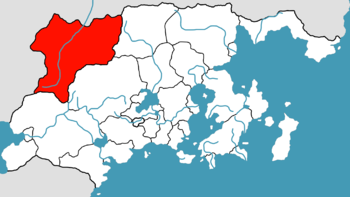Salvadoran Republic
Jump to navigation
Jump to search
Salvadoran Republic República Salvadoreña | |||||||||
|---|---|---|---|---|---|---|---|---|---|
|
Flag | |||||||||
Motto: "Republicanismo, Liberalismo, Libertad" ”Republicanism, Liberalism, Liberty" | |||||||||
 | |||||||||
| Capital | Ciutat dels Àngels | ||||||||
| Common languages | Spanish | ||||||||
| Government | Representative Democracy (de jure) Benevolent Military Dictatorship (de facto) | ||||||||
| Paúl Sáenz Mina | |||||||||
| Tomás Alemán Prats | |||||||||
| Historical era | Salvadoran Revolution of 1956 | ||||||||
| July 13, 1956 | |||||||||
| November 11, 1956 | |||||||||
| Currency | Salvadoran Peso | ||||||||
| ISO 3166 code | SV | ||||||||
| |||||||||
The Salvadoran Republic (Creeperian: República Salvadoreña), also called the Republic of El Salvador (República de El Salvador) was a revolutionary state that ruled over parts of the Principality of El Salvador between July 13, 1956 and November 11, 1956. It was led by President Paúl Sáenz Mina with support from Tomás Alemán Prats, Commander-in-Chief of the Salvadoran Army. The republic was proclaimed following the execution of Carlos Castillo Armas, the de facto pro-Creeperian dictator of the country, during the Salvadoran Revolution of 1956.


